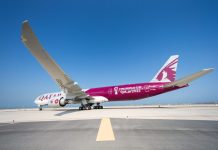Ground transport in the Democratic Republic of Congo (DRC) has always been difficult. The terrain and climate of the Congo Basin present serious barriers to road and rail construction, and the distances are enormous across this vast country. Furthermore, chronic economic mismanagement and internal conflict has led to serious under-investment over many years.
On the other hand, the DRC has thousands of kilometres of navigable waterways, and traditionally water transport has been the dominant means of moving around approximately two-thirds of the country.
Transport problems
Many of the routes are in poor condition and may be operating at only a fraction of their original capacity (if at all), despite recent attempts to make improvements
Poor Condition of Rural Roads in Congo, Africa – [VIDEO]
The First and Second Congo Wars saw great destruction of transport infrastructure from which the country has not yet recovered. Many vehicles were destroyed or commandeered by militias, especially in the north and east of the country, and the fuel supply system was also badly affected. Consequently, outside of Kinshasa, Matadi and Lubumbashi, private and commercial road transport is almost non-existent and traffic is scarce even where roads are in good condition. The few vehicles in use outside these cities are run by the United Nations, aid agencies, the DRC government, and a few larger companies such as those in the mining and energy sectors. High-resolution satellite photos on the Internet show large cities such as Bukavu, Butembo and Kikwit virtually devoid of traffic, compared to similar photos of towns in neighbouring countries.[
For the ordinary citizen though, especially in rural areas, often the only options are to cycle, walk or go by dugout canoe.
Some parts of the DRC are more accessible from neighbouring countries than from Kinshasa. For example, Bukavu itself and Goma and other north-eastern towns are linked by paved road from the DRC border to the Kenyan port of Mombasa, and most goods for these cities have been brought via this route in recent years. Similarly, Lubumbashi and the rest of Katanga Province is linked to Zambia, through which the paved highway and rail networks of Southern Africa can be accessed. Such links through neighbouring countries are generally more important for the east and south-east of the country, and are more heavily used, than surface links to the capital.
Source – Wikipedia.


















